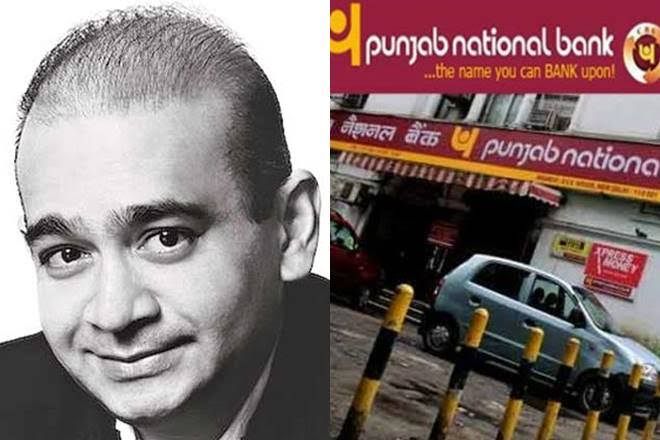Author: Shruti Mistry, a student at Amity University Chhattisgarh
ABSTRACT
The Punjab National Bank (PNB) Scam, considered the most significant financial fraud in Indian history, has underscored the urgent need for new regulatory and corporate governance measures within the country’s public sector banks. This scandal dealt a severe blow to the banking industry, disrupting business as usual and casting doubts on the financial stability of multiple banks involved in the 11,700-crore scam. The revelation of this fraud, which had gone undetected for over five years, raised serious concerns about the efficacy of both internal bank procedures and governmental oversight. Criticism was directed at the Reserve Bank of India (RBI) for its failure to uncover such a massive banking fraud. This paper aims to delve into the root causes of this colossal fraud, examining the bank’s complicity, potential loopholes, and the broader impact of such scams on various banks and the economy. Furthermore, it will shed light on the challenges confronting the banking sector and offer recommendations for addressing them.
Keywords: PNB, challenges, public sector banks, RBI, recommendations.
INTRODUCTION
On February 14, 2018, Valentine’s Day, Punjab National Bank (PNB), the second-largest public sector bank in India, disclosed a staggering scam amounting to Rs. 11,400 crore, orchestrated by one of the nation’s prominent diamond businessmen. Nirav Modi, in collaboration with PNB’s deputy manager in Mumbai branch, Gokulnath Shetty, and clerk Manoj Kharat, masterminded the fraud. Modi, along with his uncle Mehul Choksi, exploited the system by obtaining an unauthorized Letter of Undertaking (LOU) from PNB, sidestepping proper procedures. The LOU serves as a means for a bank customer to secure short-term borrowing, enabling them to obtain funds from a foreign subsidiary of an Indian bank. PNB’s failure to adhere to protocol in issuing the LOU to Nirav Modi facilitated the scam. The revelation of the scam led to a decline in PNB’s market capitalization, causing reverberations throughout the banking industry. Despite prior warnings to the Prime Minister’s Office (PMO) in 2016, the government did not take immediate action, allowing the scam to unfold. This scandal underscores the failure of both government frameworks and PNB’s risk management protocols.
UNVEILING THE SCAM’S MODUS OPERANDI
The typical process for issuing a Letter of Undertaking (LOU) involves a well-defined series of steps, with senior bank executives meticulously evaluating credit lines and conducting thorough credibility checks on Indian companies seeking substantial trade financing. However, the specific events surrounding the PNB case remain shrouded in ambiguity. Within this process, there’s a three-tiered protocol involving a Maker, Verifier, and Authorizer, culminating in the transmission of a SWIFT message to the offshore subsidiary, each participant using unique login credentials. Nevertheless, at Punjab National Bank, a glaring oversight occurred as one individual assumed all these roles. Despite the usual integration between SWIFT and Core Banking Systems (CBS), which automatically stores client data, the perpetrators of the PNB scam intentionally disconnected SWIFT from CBS, particularly for businesses owned by Nirav Modi and Mehul Choksi. This enabled fund transfers to their enterprises without the necessary documentation. This integration between CBS and SWIFT is standard practice across banks, making the failure of PNB’s IT staff to detect the disconnection highly irregular, revealing the bank’s negligence. Despite the daily summaries generated by the system regarding SWIFT transfers, neither internal nor external auditors, nor regulatory bodies, flagged any irregularities in the transactions involving Modi and Choksi. Rajnish Kumar, Chairman of SBI, emphasizes the importance of limiting the tenure of banking executives. However, at PNB, an employee processed Nirav Modi’s transactions in the same capacity for seven years, contravening established banking regulations. Typically, when a bank issues an LOU and another bank accepts it, notifications are exchanged, but in the case of PNB, no confirmation receipts were received from the accepting banks, further deepening suspicions.
The method of operation clearly indicates that Punjab National Bank is responsible due to internal system negligence caused by auditors and staff.
REPERCUSSIONS OF THE PNB SCANDAL
This banking scandal has inflicted irreparable damage on the Indian economy. Despite the frequent occurrences of such scams, the top 8 commercial banks in India collectively have a staggering Non-Performing Asset (NPA) amounting to Rs. 496115 crores. The Indian economy indeed suffered greatly as a consequence. The deficient internal controls and inadequate oversight by bank officials are squarely to blame for the PNB bank scandal. Two unscrupulous bank employees bypassed the fundamental banking systems to issue fraudulent letters of undertaking to the companies of Nirav Modi and his uncle Mehul Choksi. Both banks and the jewellery industry have faced significant pressure as a result of the PNB bank scandal.
For diamond businessmen, securing financing and credit from Indian banks has become increasingly challenging. Customers are now opting for private banks over public ones, reflecting a loss of trust in Indian public sector banks. The banking fraud in India had profound repercussions on Indian businesses, affecting Punjab National Bank shareholders, the Indian government, the banking sector, PNB employees, Indian residents, and more. The scandal eroded public trust in Foreign Institutional Investments (FII). Both public sector banks in India and the diamond industry’s reputation and values have been tarnished. Furthermore, global rating organizations have downgraded India’s ranking due to these events, significantly harming the Indian economy.
The banking sector was also significantly affected by the fraud. Between February 12 and February 15, 2018, the share prices of 34 out of 39 financial institutions declined, alongside a 1.2% decrease in the baseline BSE index. Five banks—Union Bank of India, SBI, UCO Bank, Axis Bank, and Allahabad Bank—were directly impacted as they provided PNB with short-term buyer’s credit. The Life Insurance Corporation (LIC), the largest investor, suffered losses of Rs 1,400 crore over the preceding three trading days. The fraud’s repercussions extended to SMEs, as they rely on credit for expansion but struggle to secure it due to the regulator’s ban on LOUs and LCs, as well as the high cost of alternative credit options like Letters of Credit. This situation is compounded by both regulatory actions and the stringent autonomy of individual banks, severely affecting SMEs due to the billionaire’s deception.
LOOPHOLES THAT PAVED THE WAY FOR THE SCAM
Operational risk was evident in this case, with PNB employees being accountable for attempting to manipulate the issuance process of LOUs for personal gain. There was a disregard for the Core Banking System (CBS) by SWIFT, and internal coordination was lacking, with inadequate monitoring of operations. The fraudulent activities were primarily uncovered within the internal financial system. To ensure swift and efficient banking, adherence to standard operating procedures is essential. Both external and internal auditors should track transaction and contingent liability numbers to prevent potential involvement in fraudulent activities. Concurrent auditors, responsible for payment verification, were unaware of the situation at the time, raising concerns. Consequently, the issue went unnoticed by all auditors, including concurrent, internal, and statutory auditors. The Reserve Bank of India did not mandate the connection of CBS with SWIFT, leading many banks to delay connection until recently, similar to the case of Nirav Modi. However, companies can mitigate their interest rate risk by assuming some currency risk. For example, the corporation can obtain a loan at a reduced interest rate by presenting bank guarantees obtained from a related bank in their home country (India) to an overseas branch of another Indian bank during travel.
The business benefited from accessing affordable and prompt credit. When dealing with overseas Indian banks, it could secure low-risk payments through Indian guarantee-issuing banks, while Indian banks earned fees for issuing LOUs. The main culprit behind the scam was a staff member who had access to SWIFT, representing the most significant operational risk factor. This individual exploited the system for personal gain. While the creditworthiness of borrowers is crucial, loans from Indian banks abroad are often extended to buyers with little consideration for their creditworthiness, largely due to the trust placed in local banks.
Loopholes in the implementation policy have also played a role in facilitating the scam, as evident from the scenario described above.
CHALLENGES CONFRONTING THE INDIAN BANKING SYSTEM
The banking sector is seen as the cornerstone of the economy. However, it faces distinctive challenges in detecting and prosecuting fraudsters, despite stringent regulations set by the RBI and government policies. In recent times, the government has encountered two significant hurdles in this regard:
- Vulnerabilities within the administrative framework:
How was money embezzled over a five-year period from a major Public Sector Bank (PSB) in India without detection? Was the perpetrator exceptionally skilled, or did they exploit system weaknesses? The latter seems probable. Over time, flaws in the administrative system have facilitated fraudsters in executing their schemes and evading accountability. A key issue appears to be the limited control exerted by Head Offices over branch operations. This situation echoes the PNB Scam, where Nirav Modi, a diamond dealer, effortlessly deceived the Brady House branch of PNB by bribing top officials.
- Refuge and protection extended by certain countries:
The fact that certain countries grant refuge and protection to scammers poses significant challenges in prosecuting them. For instance, the UK demonstrates considerable leniency towards individuals with prior offenses, as long as they provide financial incentives. British law allows fugitives to reside and conduct business in the country, provided they invest at least £200,000 in the economy through various channels such as stocks, government bonds, or real estate. This leniency undoubtedly makes the UK an attractive destination for fraudsters. Moreover, the UK’s stringent human rights regulations safeguard individuals believed to be at risk of rights violations, further complicating extradition efforts by countries like India in cases involving individuals such as Nirav Modi and Vijay Mallya.
RECOMMENDATIONS TO CURB THE SCAMS
Banks have been facing considerable challenges in effectively reducing non-performing assets (NPAs), promptly identifying fraudulent activities, and holding accountable those responsible for financial crimes. As a result, several recommendations are proposed to address these issues comprehensively:
- Utilizing artificial intelligence (AI): AI technologies offer the capability to analyze vast volumes of data rapidly, enabling the detection of suspicious activities in real-time. By implementing AI algorithms, banks can automatically identify potentially fraudulent transactions and flag them for further investigation. This proactive approach allows authorities to focus their efforts on addressing the most serious cases of fraud.
- Investigating internal fraud: Many instances of significant bank fraud involve collaboration with bank employees. Therefore, implementing robust internal controls, conducting thorough background checks during the hiring process, and instituting mechanisms for continuous monitoring can help mitigate the risk of internal fraud. By addressing vulnerabilities within their own ranks, banks can prevent fraudulent activities from occurring in the first place.
- Partnering with accredited accounting firms: Banks can leverage the expertise of reputable accounting firms to enhance their risk management practices. These firms can be tasked with conducting real-time forensic audits and monitoring loan portfolios to identify irregularities or potential instances of fraud. By outsourcing these functions to external specialists, banks can free up internal resources to focus on strategic risk mitigation efforts.
- Establishing an internal rating agency: To improve the evaluation process for large-scale projects seeking financing, banks can establish their own internal rating agencies. These agencies would be responsible for conducting thorough assessments of proposed projects, taking into account factors such as the viability of the business plan and the industry’s sensitivity to macroeconomic conditions. By conducting independent evaluations, banks can make more informed lending decisions and reduce the likelihood of financing projects with a high risk of default.
- Monitoring extradition treaties: Despite existing extradition agreements between countries, challenges often arise in the extradition process, leading to delays or obstacles in bringing fugitives to justice. In the context of financial crimes, such as those involving fraudsters fleeing to countries with lenient extradition policies, it is imperative for governments to actively engage in diplomatic discussions and negotiations to expedite the extradition process. By strengthening international cooperation and coordination, authorities can enhance their ability to apprehend and prosecute individuals involved in financial crimes across borders.
Overall, by implementing a combination of proactive measures, including leveraging advanced technologies, strengthening internal controls, collaborating with external experts, and enhancing international cooperation, banks can bolster their defenses against financial fraud and contribute to a more resilient and secure financial system.
CONCLUSION
The Punjab National Bank (PNB) scandal has exposed numerous banks to credit risk, prompting the need for thorough investigations to uncover how the process was compromised. It’s crucial to understand how a small group of staff, in collusion with clients, managed to perpetrate a significant financial fraud over an extended period without detection. The incident highlights operational risk gaps, such as insufficient verification processes for disbursing non-funded loans, leading to losses attributable to credit risk.
The impact of Nirav Modi’s fraud extends beyond PNB and his associated businesses, affecting the entire banking industry and the Indian economy. Therefore, regulatory authorities and banks must collaborate closely to prevent similar occurrences in the future. PNB has reinforced its credit underwriting procedures to address fraudulent behaviours observed in the wake of the scandal. Additionally, the unmonitored use of the SWIFT financial messaging system facilitated the scam, indicating compliance breaches.
It’s concerning that the fraudulent transactions went undetected for seven years, even during external audits, highlighting weaknesses in the bank’s risk management system. Proactive measures, such as improved monitoring of transactions and collaboration with intermediary banks, could help prevent such incidents in the future. However, the incident raises questions about the effectiveness of banking regulators in overseeing fraud prevention measures. While the RBI has introduced various risk management processes, empowering banks to respond swiftly to fraudsters is essential to avoid recurrence.
Beyond financial losses, the scandal jeopardizes the reputation of the banking industry, especially amid global efforts to stabilize bank reforms and enhance financial sector efficiency. The government’s capital infusion plans, aimed at revitalizing public sector banks burdened by NPAs and low capital adequacy, may need reassessment in light of these frauds. Decisive action by the Indian government, with guidance from the RBI, is necessary to restore confidence in the financial system and prevent future frauds.




